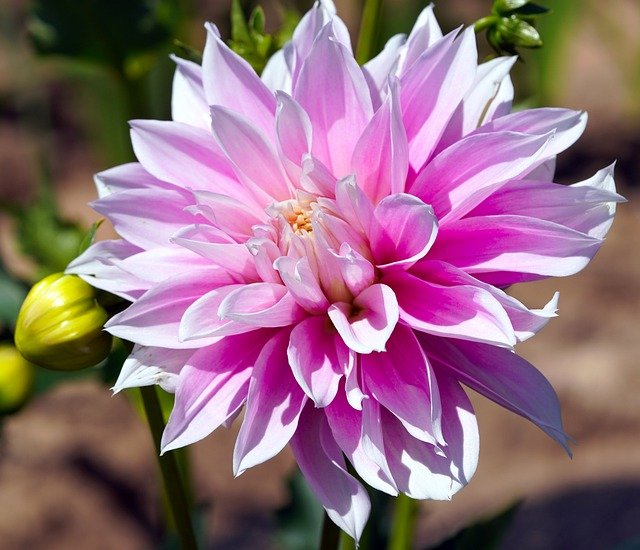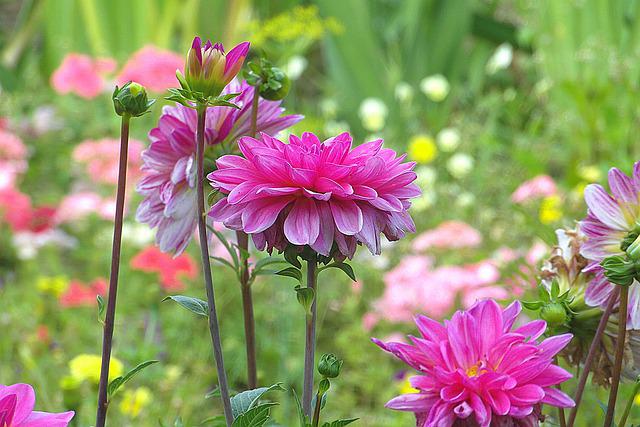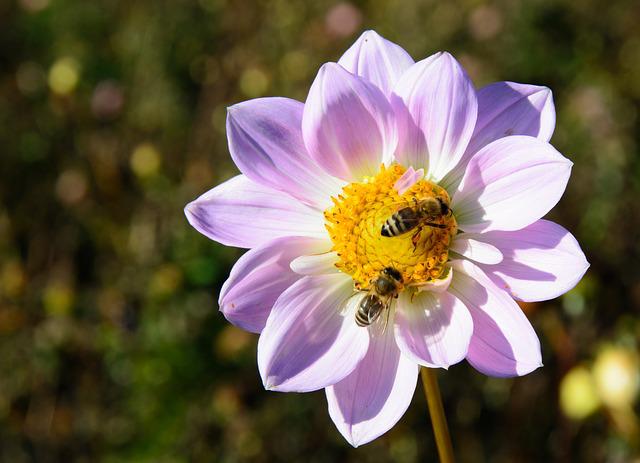Dahlia Growth Stages: Know How Dahlia Grows

Dahlia’s growth stages are important as they will help you understand how your dahlias are growing. During each stage, the plant undergoes different changes that help it reach its full potential. This article will detail each stage of dahlia growth and explain what you need to do to ensure your dahlias are thriving.
Table of Contents
6 Stages of Dahlia’s Growth
Dahlias take about eight weeks to bloom from tubers. If you plant seedlings in April, you can expect to see flowers in June. On the other hand, most dahlias respond to warm weather in July and continue to bloom until late fall.
Collecting mature pods or acquiring seeds from a reliable dealer is the first step in planting dahlias. Wait until the flower’s ray petals have fallen off and the pod has turned a light tannish green before picking the seeds. The seeds are ready when their interiors have turned from gray to dark brown.
Early Stage: Seed
An embryo, the precursor to a plant’s roots, stem, and leaves, is found inside every seed. Dahlia seeds are easily recognized because they resemble small, black pellets with a slightly different shape on one end from the other.
Indoor seed should begin between six and eight weeks before the last frost date. Flowers can be harvested after a 100-120 day time commitment.
Germination
If dahlia seedlings are not going to be planted right away, they need to be started in containers first. Sow the seeds in the ground at a depth of 14 inches. Because they are not resistant to the cold, you need to put off planting them until after all danger of frost has passed. It is required that the soil temperature be at least sixty degrees Fahrenheit.
Germination of dahlia seeds can take anywhere from three days to three weeks, depending on the variety, seed quality, and environmental conditions at the time of planting. In contrast to vegetable seed, Dahlia seed does not sprout right away. The germination process can take several days. It is not healthy to overwater or maintain a soil that is constantly saturated with water.
The dahlia is an example of a dicot plant. Its sprout is a vibrant green color and has two oblong and spherical leaves. A very thin line can be seen running down the middle of each leaf. The cotyledons are the first leaves to develop after the seed germinates.
In their first year of growth, dahlia seeds develop into long tubers stored underground. It will take the plants another year or two before they can establish healthy growth nodes and produce plants with vibrant colors.
Leaf Development

When the young seedlings reach a height of approximately 7 centimeters (about 3 inches), it is time to separate and transplant them into small plugs or pots. You should use the same potting soil to fill these pots as when germinating your seedlings. After they have been repotted, the seedlings need adequate water to maintain a moist soil environment. Before being moved outside, they should remain in their pots for four to five weeks.
Young seedlings need time to get used to being in the open air before they can be transplanted outside. You should gradually move your dahlias outside to acclimate them to their new surroundings. Start your seedlings off by spending a few hours outside a day and gradually increase that time until they have spent several nights in the open air. Start the acclimation process on a day with a forecast of mild weather, as your delicate plants will suffer damage if exposed to excessive wind or rain.
It is recommended that they be placed in a cold frame or left outside during the day and brought inside at night for seven to ten days before being transplanted to assist in conditioning the immature seedlings and reduce the amount of shock they will experience.
Maturation: Flowering
The flower is the plant’s organ responsible for sexual reproduction. To entice pollinators, the petals of flowers are frequently prominent (although this varies depending on the type of seed), vividly colored, and intensely fragrant. The flowering stage of a plant’s life cycle is an exciting time to watch! The most fertile part of a dahlia flower is typically located in the middle of the flower.
Pollination
Dahlias are monoecious, meaning each plant possesses both male and female reproductive organs.
The style, stigma, and ovary are parts of the pistil, the female reproductive organ of the flower. The stigma is similar to the pistil’s head, the style is similar to the pistil’s stalk, and the ovary is similar to the pistil’s base. The stigma is responsible for collecting pollen and directing it along with style, also known as the pollen tube, to the ovary, where it can be fertilized. After the ovary has been pollinated, the seed will begin to develop close to its base.
The male reproductive organ of the flower is known as the stamen. The filament serves as the stamen’s stalk, while the anther acts as the anther’s apex. The production of pollen is the responsibility of the anther. Pollen should be transferred to the pistil, also known as the female part of the flower, by pollinators.
As the stigma (the top of the pistil) continues to develop, it will eventually open up into the shape of a Y, which will enable the hairs to collect pollen. When pollen sticks to the stigma, it has the opportunity to move down the tube and fertilize the ovary that is located at the bottom of the flower; this process typically takes a few days.
Utilizing a wide variety of insect species as pollinators is yet another method of pollination. The stunning blossoms of dahlias entice a wide variety of pollinators, including honey bees, bumble bees, solitary bees, butterflies, and more.

Seed Dispersal
The flower’s life cycle ends with the spreading of its seeds, also referred to as seed dispersion. There are many means by which seeds can be dispersed, but the propagation of dahlias is almost entirely dependent on human intervention.
The seed pods of dahlias contain a significant number of seeds. You have to wait until the blooms have completely dropped all of their ray petals and the pod has changed to color between light tan-green and dark brown; this indicates that the seeds inside are mature.
